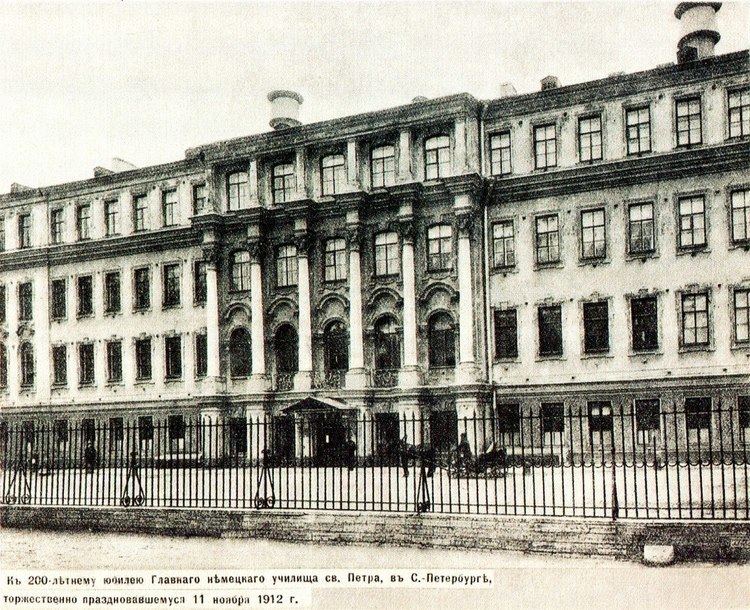 | ||
Saint Peter's School (Russian: Петришуле, German: Sankt-Petri-Schule), often referred to as Petrischule (the German transliteration of its Russian name) is a secondary school in St. Petersburg. It is one of the oldest educational institutions in Russia, having been founded in 1709.
Contents
History
In 1705, Peter the Great decreed that Protestant churches could be established in St. Petersburg. The first reference to the school is in 1709, in a letter (now in the Archive of the Russian Navy) by Admiral Cornelius Cruys to the Emperor (Peter) regarding the establishment of a Lutheran church and school at his estate, located on the site of what is now the New Hermitage on Millionnaya Street in St. Petersburg's German settlement.
In 1761, the German theologian, geographer, historian, and teacher Anton Friedrich Büsching was invited by the Lutheran community of St. Petersburg to be headmaster of the school at the Lutheran Church of Saint Peter and Saint Paul.
The current school building, at numbers 22-24 Nevsky Prospect, was built in the 1760s and rebuilt several times - in 1799, in 1876-1877, and in 1913-1915.
Among the educators who taught at the school are:
War and Revolution
In 1912, the school celebrated its 200th anniversary. By this time it had become the largest secondary school in Russia, with more than 1600 students, of whom 25% were Russian. The school at this time enjoyed a stellar reputation for its broad education, particularly the teaching of foreign languages.
Under the direction of the church council of the Lutheran Church of Saint Peter and Saint Paul, the school's finances were kept on a sound basis, and further expansion and additions to the school buildings were planned.
Then came the First World War. With the war came anti-German sentiment. The Imperial Ministry of Education decreed that all classes were to be taught in Russian, and that the school name was to be written in Russian. Teachers who were not fluent in Russian left, and gymnastics instructor Anton Preis, a German national, was expelled by the authorities. Anti-German sentiment led some families to withdraw their children from the school, while senior students left to join the Russian army.
After 1918, the school bore the following names: United Soviet Labor School № 4, № 14, № 28, № 41, 222-I and 217-I Schools of the Kuibyshev district of Leningrad. In 1991 the school's historic name was restored.
Famous former pupils
Currently
As of the beginning of the 21st Century, the school had over 500 students and about 60 teachers. The German language is studied intensively and there are international student exchanges. The school maintains links with many schools in Germany and the Netherlands.
